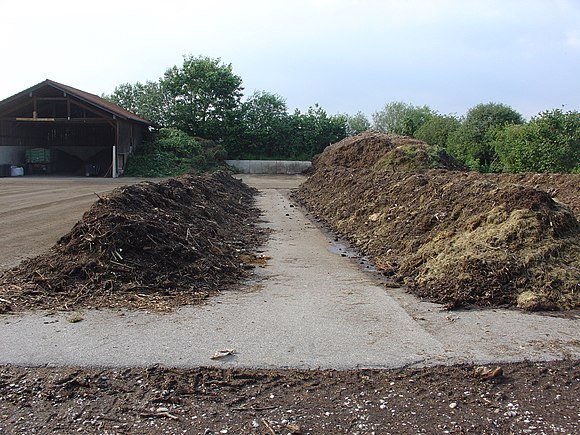Compost preparation, The good way to promote soil structure, nutrients & moisture content of soil.
Most people sometimes compare inorganic fertilizer to organic fertilizer. There are great distinction between them in terms of fertility levels, structure, decomposition and absorption rate. For instance, when you take mineral or inorganic fertilizers like NPK and Urea that have been chemically manufactured, their decomposition is very fast. As soon as there is little moisture they are able to decomposed with the soil for assimilation by the plants root. Organic fertilizers like composts, green manure and poultry droppings take longer period of time to decompose for the use by plants. In terms of structural formation with the soil, organic fertilizer like composts and poultry droppings are able to bind the soil together to prevent soil erosion at places of gradients. Inorganic Fertilizers like NPK and Muriate of potash their excessive usage will turn to hardening to soil and sometimes kill some of the microbial organism which contribute immensely in aeration and and losing the soil particles.

This explains the reason why most farmers prefer the use of organic fertilizers which are very cheap to get and also help to improve soil structure and fertility levels. But some of the disadvantage of using organic fertilizers sometimes is their slow decomposition rate especially when you want the plants to uptake them quickly. So it's advisable to prepare ahead before tilling your field for cultivation. One of the best organic fertilizer I prefer but its preparation is technical is Composts. Due to their technicality of preparation, many farmers avoid preparing it. Again the question is, how quantity of composts can be prepare to cover about 10 hectares of farm? Only few composts that few farmers are able to prepare because of bulky nature in terms of gathering the waste materials for composts preparation. Mostly composts are prepared to supplement vegetable crops gardening to increase production.
Due to their technicality in preparation that's why we are here to learn together how to make composts.
Compost in its simplest explanation is different waste materials that have been decomposed supply to crops to improve growth and maintenance.
Compost preparation materials needed
A lot of materials from plants residues can be collected as materials for making compost. A mixture of green materials such as leaves, grass, food scraps such as plantain peels are good source of Nitrogen for plants to use. Addition of stalks, paper, and wood chips increase carbon. Urea and water should be mixed with the materials collect to promote microbial decomposition.
The process of compost preparation
The materials gathered are put together into heaps. This can be done in bays. some 3 structures either constructed with wooden structure, concrete or aluminum sheets. This is to protect the compost heaps and incorporates high temperature for compost decomposition. After heaping the compost in bays, water is continuously sprinkled onto the compost to encourage microbial decomposition of the compost. To incorporate temperature around 65°c the farmer should cover the compost so that the bacteria can act quickly. The heap of compost should be turned at regular intervals for decomposition of the materials. Stick is therefore used to knock the compost for aeration. Depending on the size of compost would determine when the compost will decompose. For smaller size compost, the materials break down into humus in a process taking month. But for larger heaps can they can take 6 months for the compost to be ready.
Few weeks for the compost to be ready, the field should be readily available for the application of the compost. The field for the vegetables cultivation should be well tilled; ploughed and harrowed with all stumps being removed. The prepared compost should therefore be spread through the surface of the soil. The vegetables should therefore be transplanted on the field. One important this is that the compost can improve soil structure and and moisture content during drought, apart from improving the nutrients contents of the soil.
0
0
0.000
Yay! 🤗
Your content has been boosted with Ecency Points, by @jude9.
Use Ecency daily to boost your growth on platform!
Support Ecency
Vote for new Proposal
Delegate HP and earn more